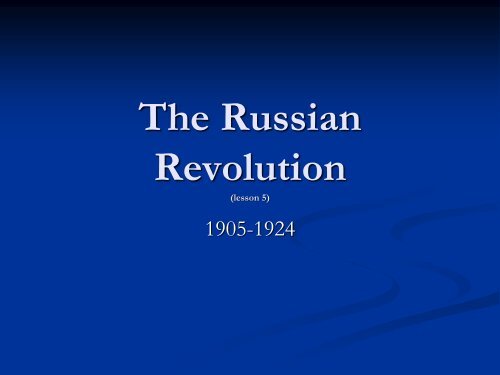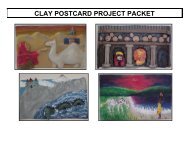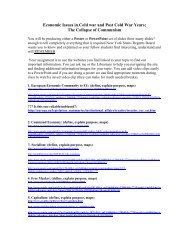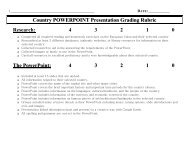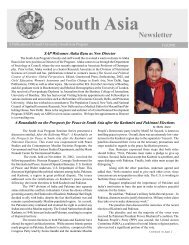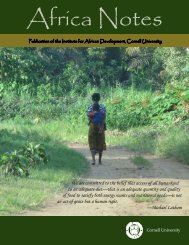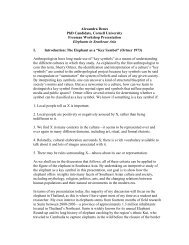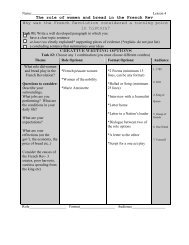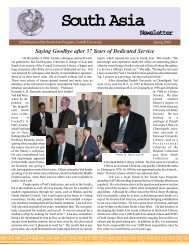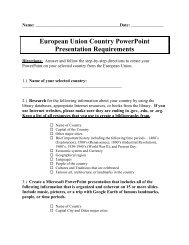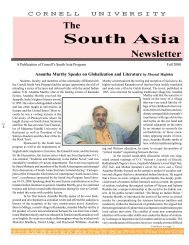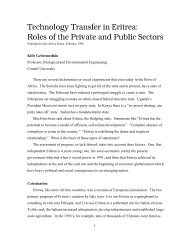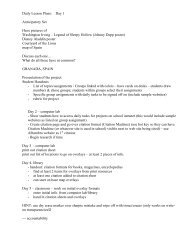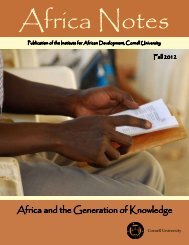Russian Revolution PowerPoint presentation (.pdf)
Russian Revolution PowerPoint presentation (.pdf)
Russian Revolution PowerPoint presentation (.pdf)
Create successful ePaper yourself
Turn your PDF publications into a flip-book with our unique Google optimized e-Paper software.
The <strong>Russian</strong><br />
<strong>Revolution</strong><br />
(lesson 5)<br />
1905-1924
Table of Contents
Long Term Causes of <strong>Revolution</strong><br />
• Czarist Rule<br />
• Peasant Unrest<br />
• Problems of Urban Workers<br />
• Diversity and Nationalism
Pre-revolutionary Russia<br />
• Russia still ruled by Czars<br />
• Romanov dynasty still in<br />
power<br />
• Czar Nicholas II, the last<br />
<strong>Russian</strong> Czar, tried to<br />
industrialize and modernize<br />
Russia<br />
• Czar Nicholas resisted<br />
political reform and tried to<br />
suppress the ideals of selfrule<br />
and democracy (French<br />
Rev)<br />
• Used harsh tactics and secret<br />
police to keep power<br />
http://www.gwpda.org/memoir/FrAmbRus/images/pal1.jpg
Unhappiness<br />
Who is unhappy with the rule of Nicholas II<br />
- Working class: terrible living and working conditions<br />
and low wages, unions are outlawed. Socialists spread<br />
ideas about reform among these workers.<br />
- Minorities- ethnic and religious minorities<br />
discriminated against<br />
- Middle-class liberals- want self-rule<br />
- Peasants- rigid class system. no ownership of land<br />
and high taxes. Angry and fearful at industrialization<br />
because of fear of change
http://4.bp.blogspot.com/_-0f2OLadvVk/R5agafDOc4I/AAAAAAAAC4c/fFyX94moId8/s320/bloody-sunday.jpg<br />
<strong>Revolution</strong> of 1905<br />
• Defeat in war with<br />
Japan in 1904<br />
resulted in low spirits<br />
• This combined with<br />
peasant unhappiness<br />
leads to “Bloody<br />
Sunday”<br />
• In January 1905,<br />
peaceful protesters<br />
marched in St.<br />
Petersburg to<br />
influence Czar for<br />
reform<br />
• Czar Nicholas calls<br />
in soldiers and 1,000<br />
deaths result<br />
• Destroyed people’s<br />
faith/trust in czar
Change<br />
• After Bloody Sunday, violence breaks out<br />
throughout Russia<br />
• Czar Nicholas promises some reforms<br />
• Freedom of Speech<br />
- Establishment of Duma, elected national legislature<br />
Duma had limited powers and did little to relieve<br />
peasant and worker discontent. It was dissolved<br />
when it criticized the Czar
World War I<br />
• Russia member of Allied powers<br />
• Russia not ready for industrialized war<br />
• <strong>Russian</strong> soldiers not adequately prepared<br />
• <strong>Russian</strong> people lacked confidence in Russia’s<br />
military strength<br />
• Russia suffered many defeats at the hands of the<br />
Germans on the Eastern Front
The March <strong>Revolution</strong><br />
• Military defeats and food shortages culminated in a<br />
revolution in March 1917<br />
• Rioters in St. Petersburg demanded bread<br />
• Soldiers sympathized and refused to fire on them<br />
• With no control of his troops and facing anarchy in his<br />
country, Czar Nicholas abdicated (gave up) his throne<br />
in March 1917<br />
• Provisional (temporary) government set up, promised<br />
to write constitution<br />
• Unpopular decision to remain in WWI
In Slow Motion<br />
• Provision government slow to bring change<br />
• <strong>Revolution</strong>ary socialists set up soviets, councils<br />
of workers and soldiers, in <strong>Russian</strong> cities<br />
• Worked within the system that was set up<br />
• Taken over by a radical socialist party
The Rise of Lenin<br />
• Vladimir Lenin and Leon Trotsky headed a<br />
revolutionary socialist party, the Bolsheviks<br />
• Based on ideas of Karl Marx<br />
• An elite group of reformers, the Bolsheviks,<br />
would guide the revolution in Russia<br />
• Promises of “Peace, Land and Bread”<br />
• Promised an end to Russia in WWI<br />
• Promised land reform and an end to food<br />
shortages
Petrograd, 4 July 1917. Street demonstration on Nevsky Prospekt<br />
just after troops of the Provisional Government have opened fire with machine guns<br />
http://ibhistoryreview.wikispaces.com/file/view/38a2d72a.jpg/30560514/38a2d72a.jpg
• Nov. 1917, the<br />
Bolsheviks led<br />
soldiers, sailors and<br />
factory workers.<br />
Overthrew<br />
provisional<br />
government<br />
• Bolsheviks <br />
Communists<br />
• Distributed land to<br />
peasants and gave<br />
workers control of<br />
factories<br />
• http://ssl.schoolportal.co.uk/GroupDownloadAttachment.aspGroupId=671<br />
273&AttachmentID=591253<br />
QuickTime and a<br />
decompressor<br />
are needed to see this picture.
Lenin in Charge<br />
QuickTime and a<br />
decompressor<br />
are needed to see this picture.<br />
• Withdraws from WWI<br />
• Treaty of Brest Litovsk – costly, but knew that needed to<br />
make peace with Germany at any price so could deal with<br />
enemies at home<br />
• http://i.dailymail.co.uk/i/pix/2009/10/22/article-1222209-0021FC9000000258-784_468x266_popup.jpg
Civil War<br />
• 1918-1921 Lenin’s Red Army vs. the Whites (those<br />
loyal to czar)<br />
• Nationalist groups rebelled. Independence for Estonia,<br />
Latvia, Lithuania and Poland<br />
• Brutal tactics: Whites slaughtered communists.<br />
• Communists used secret police to root out enemies<br />
• Thousands executed by Communists who were<br />
SUSPECTED of opposing revolution<br />
• Executed Czar Nicholas and his entire family, the<br />
Romanovs
http://www.texemarrs.com/images/romanov_family_apr11.jpg
The Romanov Girls<br />
http://www.alef.net/ALEFPeople/AnastasiaRomanov/RomanovGirls.Gif
QuickTime and a<br />
decompressor<br />
are needed to see this picture.<br />
• GB, France and the US sent troops to help the Whites<br />
• Foreign intervention stirred <strong>Russian</strong> nationalism<br />
• Inspired the Red Army, and they defeated enemies by 1921.<br />
• http://images4.wikia.nocookie.net/__cb20100102221203/cybernations/images/a/a3/<strong>Russian</strong>_civil_war_1918-<br />
1920_white_army.jpg
One Party System<br />
• Lenin’s new government did not have a<br />
constitution and an elected legislature<br />
• Communist Party, not the people, had power<br />
• Only legal party<br />
• Only its members could run for office<br />
• Enforced will through military and secret police
The Economy<br />
• Bolshevik leaders during the civil war had taken<br />
over banks, mines, factories and RR’s.<br />
• Led to economic disaster!<br />
• New Economic Policy (NEP) adopted by Lenin,<br />
1921<br />
• Government owned banks, large industry, foreign<br />
trade<br />
• Allowed for private ownership of businesses<br />
• Allowed economy to recover, peasants flourished
1922 – Lenin and Communists<br />
had gained control over much<br />
of <strong>Russian</strong> empire<br />
Created the Union of Soviet<br />
Socialist Republics (USSR).<br />
(Soviet Union)<br />
Russia controlled the other<br />
states<br />
http://upload.wikimedia.org/wikipedia/commons/c/c3/Flag<br />
_of_the_Soviet_Union.png
QuickTime and a<br />
decompressor<br />
are needed to see this picture.<br />
http://novaonline.nvcc.edu/eli/evans/Photos/Russia/Maps/Map2000.jpg
Stalin and Communist Dictatorship<br />
• Lenin dies, 1924<br />
• Joseph Stalin, new<br />
Communist leader<br />
• He won the power struggle to<br />
lead the party edging out Leon<br />
Trotsky<br />
• Rules via terror and brutality<br />
• Great Purge – 1930s –<br />
accused thousands of crimes<br />
against the government.<br />
Fearful other Communists<br />
plotting against him<br />
• Executions and prison camps<br />
QuickTime and a<br />
decompressor<br />
are needed to see this picture.<br />
http://www.onthisdeity.com/wp-content/uploads/2011/03/Stalin1.jpg
Stalin’s Paranoia<br />
• “It’s necessary for those feared by the many to<br />
fear the many” –Publicius Syrus<br />
• Purge: to remove (usually with force or by<br />
killing) opponents or people considered<br />
undesirable from a state or organization<br />
• Many high officials in the communist party<br />
were killed, ie Kamenev and Zinoviev<br />
• Journey Into The Whirlwind by Eugenia Ginzburg
Key Terms<br />
• One party Rule: you are free to vote for anyone<br />
in the communist party, began with Lenin<br />
• Totalitarianism: Government that exercises<br />
absolute and centralized control over all aspects<br />
of life (i.e. dictators)<br />
• Russification: Stalin continued Czars hatred<br />
forced assassination of ethnic minorites. Now<br />
assimilation includes becoming a communist.<br />
<strong>Russian</strong>s hold most key positions<br />
• Stalin was not even <strong>Russian</strong>, He was from Georgia!
The Economy Under Stalin<br />
• Command Economy: Synonym for<br />
communism, the gov’t takes control/commands<br />
the economy<br />
• Five Year Plans: Stalin ends Lenin’s NEP and<br />
goes to command economic plan to set<br />
industrial, agricultural, and social goals<br />
• Heavy Industry, the creation of towns such as<br />
Magnitagorsk Behind the Urals by John Scott<br />
• Consumer goods decreased
Collectivization/Agriculture<br />
• Land is pooled into large farms and people work<br />
and live together<br />
• All receive the same amount of benefits<br />
• Often production quotas are forced<br />
• People running the farms often do not know the<br />
first thing about agriculture, Execution by Hunger<br />
by Miron Dolot<br />
• Kulak: “a rich peasant” a peasant who gained<br />
economic status from Lenin’s NEP era, and was<br />
targeted by Stalin


